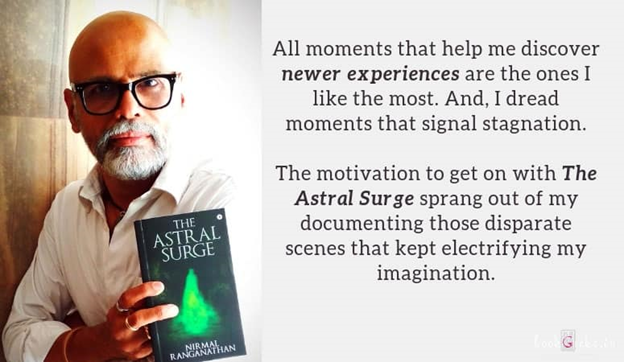Interview With Biman Nath, Author of 'Homi J Bhabha: A Renaissance Man Among Scientists'
on Apr 07, 2022
Biman Nath is an astrophysicist at the Raman Research Institute. He was born in Assam, and after initial schooling there, he studied in Delhi University and then received his PhD in University of Maryland, USA.
His research interests include the evolution of galaxies, and the interaction of galaxies with diffuse gas in the universe. He is interested in popularization of science, and has published several books and articles in Bengali and English.
1) Homi J Bhabha, a pioneer of modern India, founded the Tata Institute of Fundamental Research (TIFR). Was it fruitful to establish this institute at that time? Please share some interesting details about Dr Bhabha’s journey.
Ans: TIFR did fulfil many aspects of Bhabha’s vision, even after his death. It not only provided the foundations for nuclear research, which was needed to harness nuclear energy, but also became a center of excellence in other fields of science in later years.
2) What are the exceptional achievements of Dr Homi Jehangir Bhabha?
Ans: In brief, his theoretical work on nuclear physics to begin with, and then his building the foundations of nuclear research in India, in addition to building institutions that had the academic environment to foster fundamental research in a variety of fields. Not only was he an excellent scientist and an organiser, but his vision also helped chart the growth of India’s nuclear capabilities and he negotiated with other countries to firmly voice India’s stand in international platforms.
3) What is the current scenario in ‘Nuclear Energy’? Please answer with regard to Bhabha’s vision of bringing high-quality facilities to pursue research on nuclear energy in India.
Ans: The situation of nuclear energy is, admittedly, not very rosy in any part of the world. There is a growing concern about radioactive waste and the overall competitiveness against other natural (and renewable) resources, like wind and solar power. It was different in Bhabha’s time, and we should look at it in that perspective. He felt he had to get the designs and crucial parts from abroad, in order to move fast on this frontier, but to a large extent, the efforts were indigenous. At that time, our manufacturing industry was not strong, and the research and development sector was in its initial stages. We should also remember that Bhabha did whatever he did within the first 15 years of India as an independent country. By all standards, his was a heroic effort.
4) One of the most prominent works by Homi J Bhabha highlights cosmic rays and his life-long obsession with them. What are the fundamental traits which Bhabha showcased during this one-of-a-kind project?
Ans: Bhabha’s research on comic ray air-shower was pioneering. His calculations (in collaboration with others, such as Heitler) were among the first in the world. These results helped later scientists to interpret cosmic rays, design detectors, and study nuclear physics with cosmic rays. His theoretical work was outstanding because of his mathematical skill, but he proved his mettle even in experimental work as well—this was the most impressive trait of Bhabha as a full-fledged scientist. He built the first cloud chamber in India and helped develop an indigenous effort in balloon experiments, in order to push the frontiers in cosmic rays. For many decades after Bhabha’s demise, TIFR remained one of the centres of excellence in cosmic ray research in the world.
5) The book showcases the conflict of interest between Homi Bhabha and his father related to the choice of subject for the former. How were you so sure about this piece of information? What are some of your authentic sources to confirm significant incidents in his story?
Ans: The sources are basically letters written between them, which have been published and are available for anyone to study, so their authenticity is beyond any doubt.



.jpg)






.jpg)

.jpg)
.jpg)
.jpg)
.jpg)

.jpg)










Sorry! No comment found for this post.